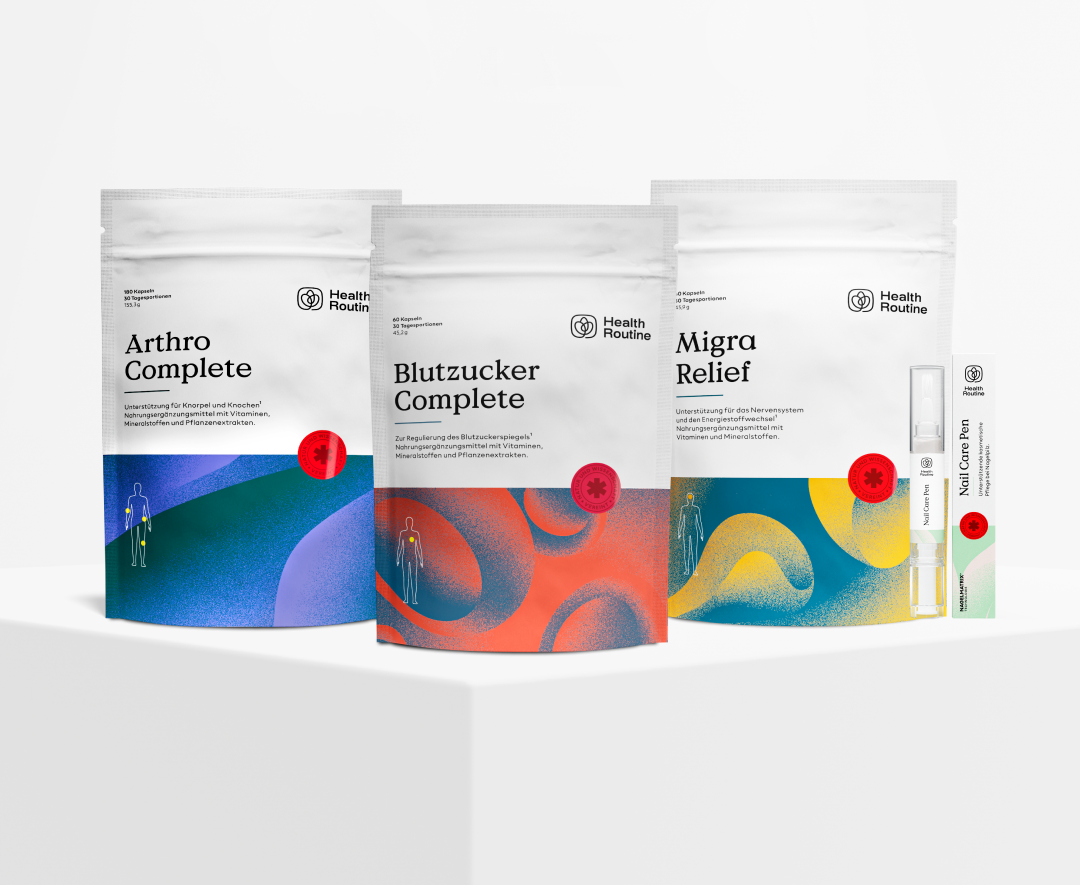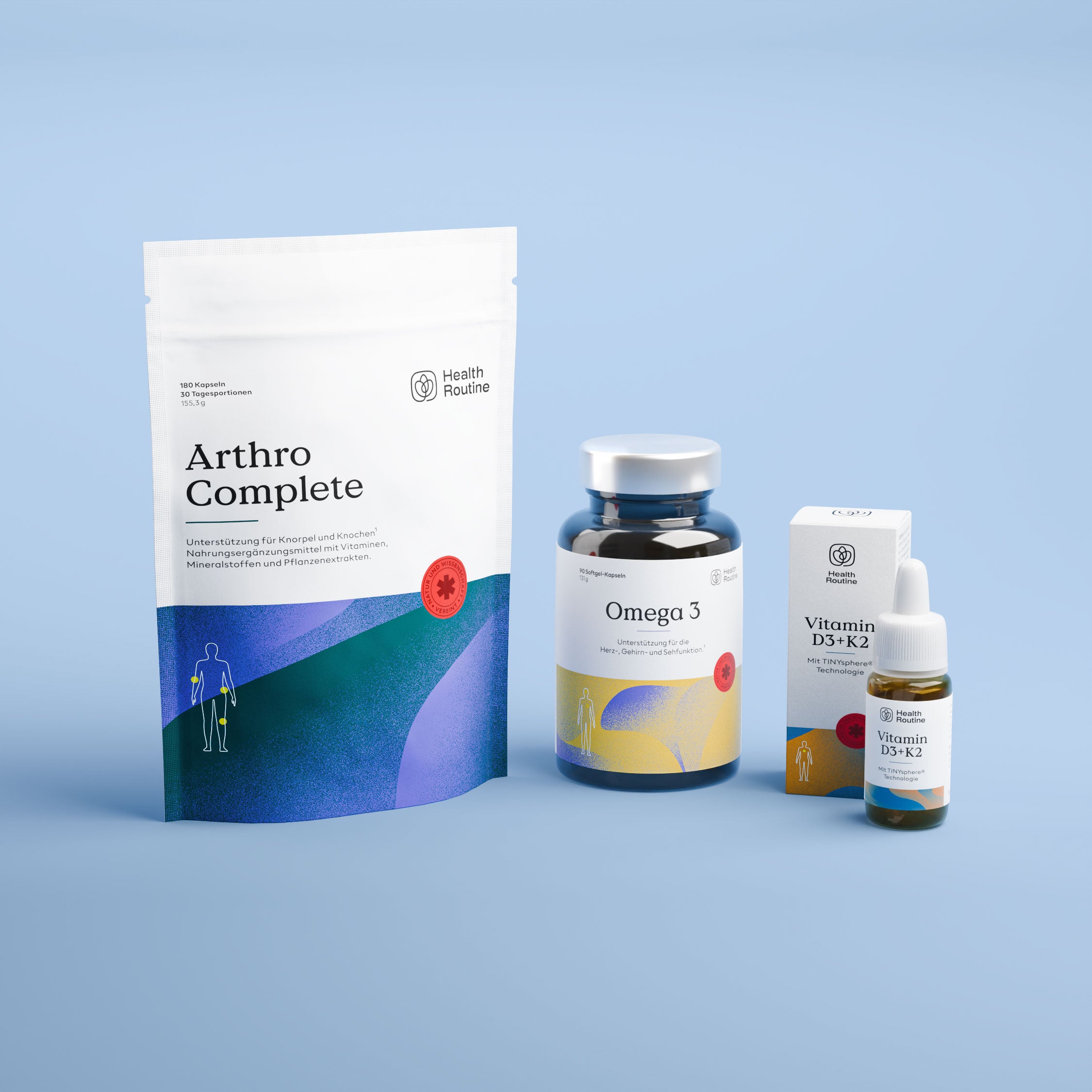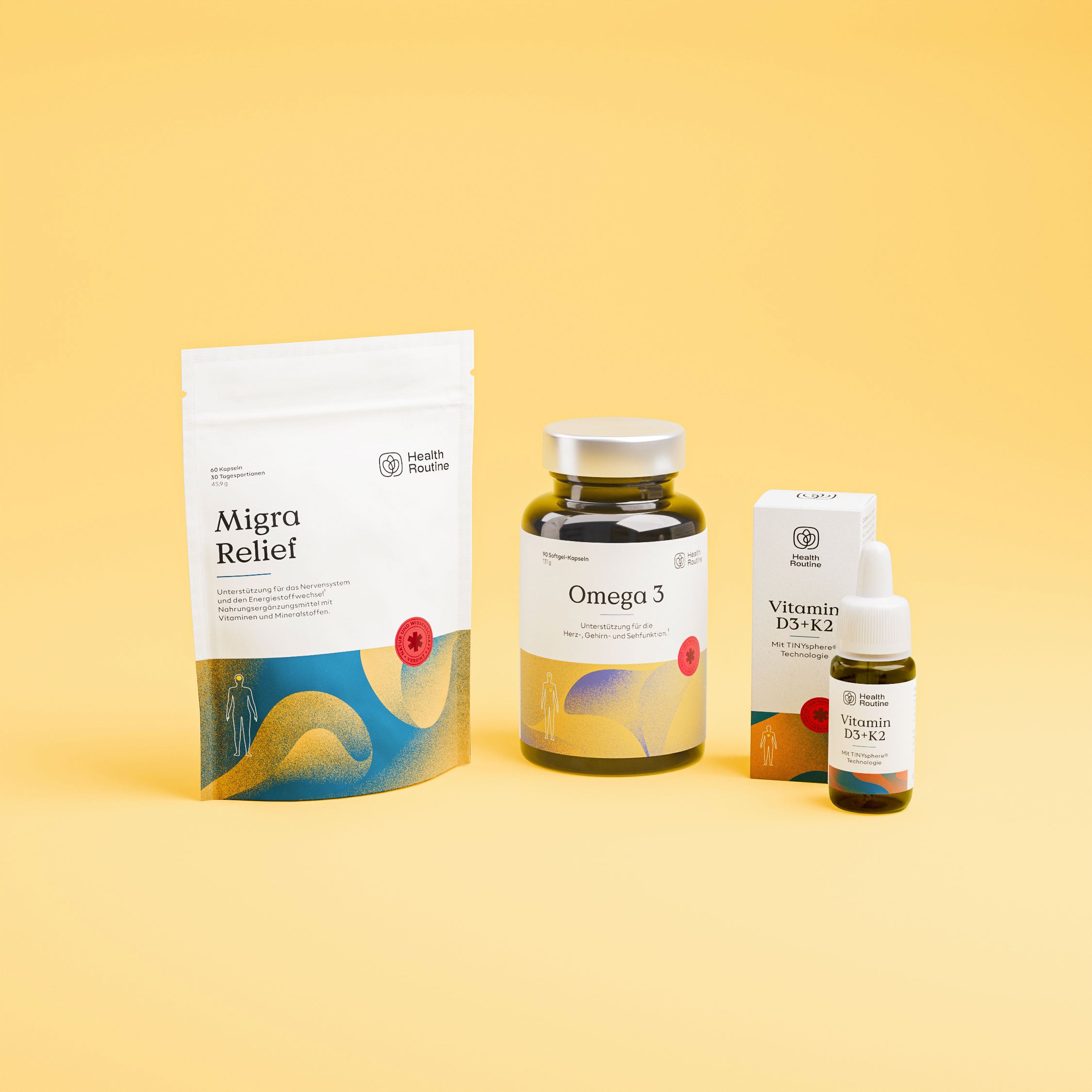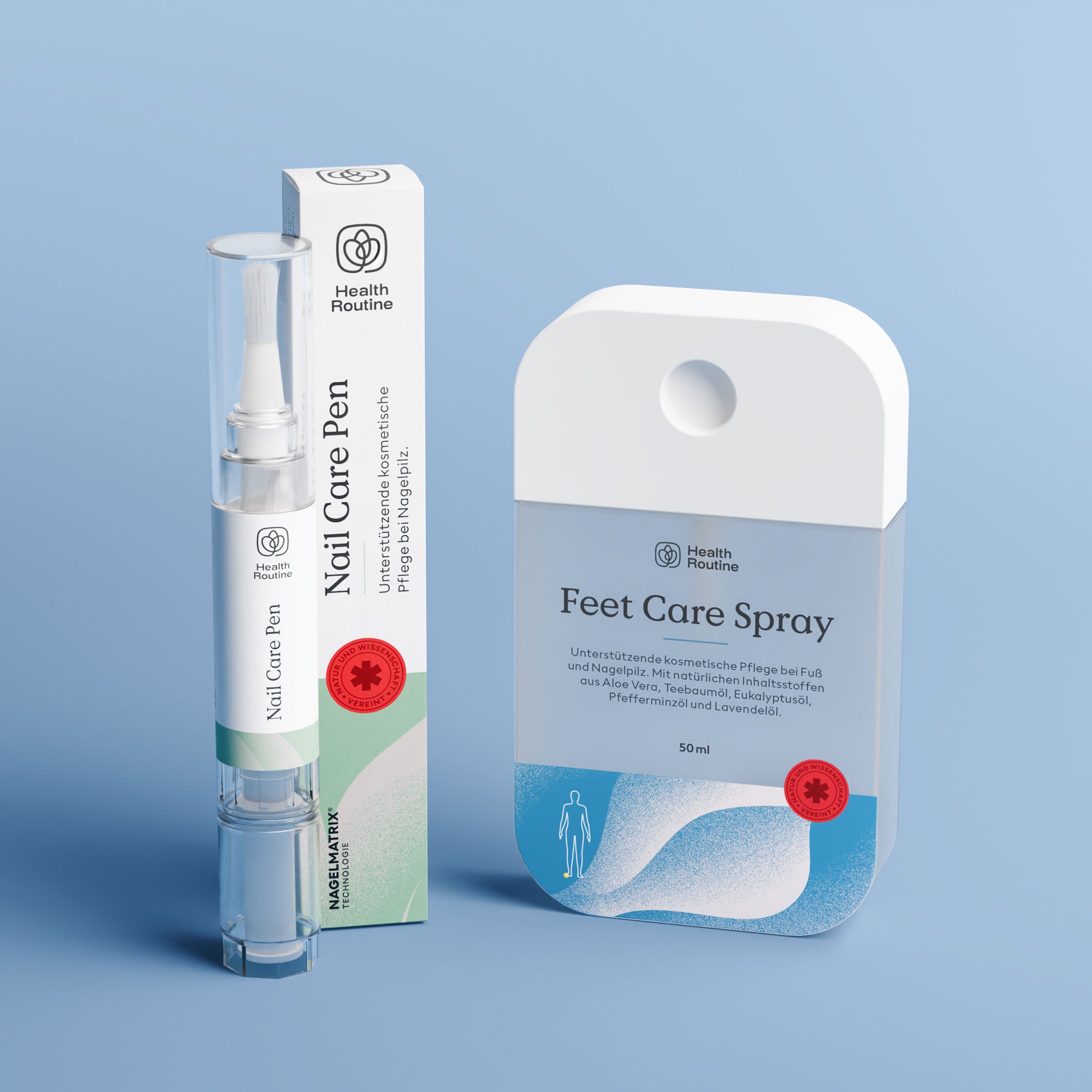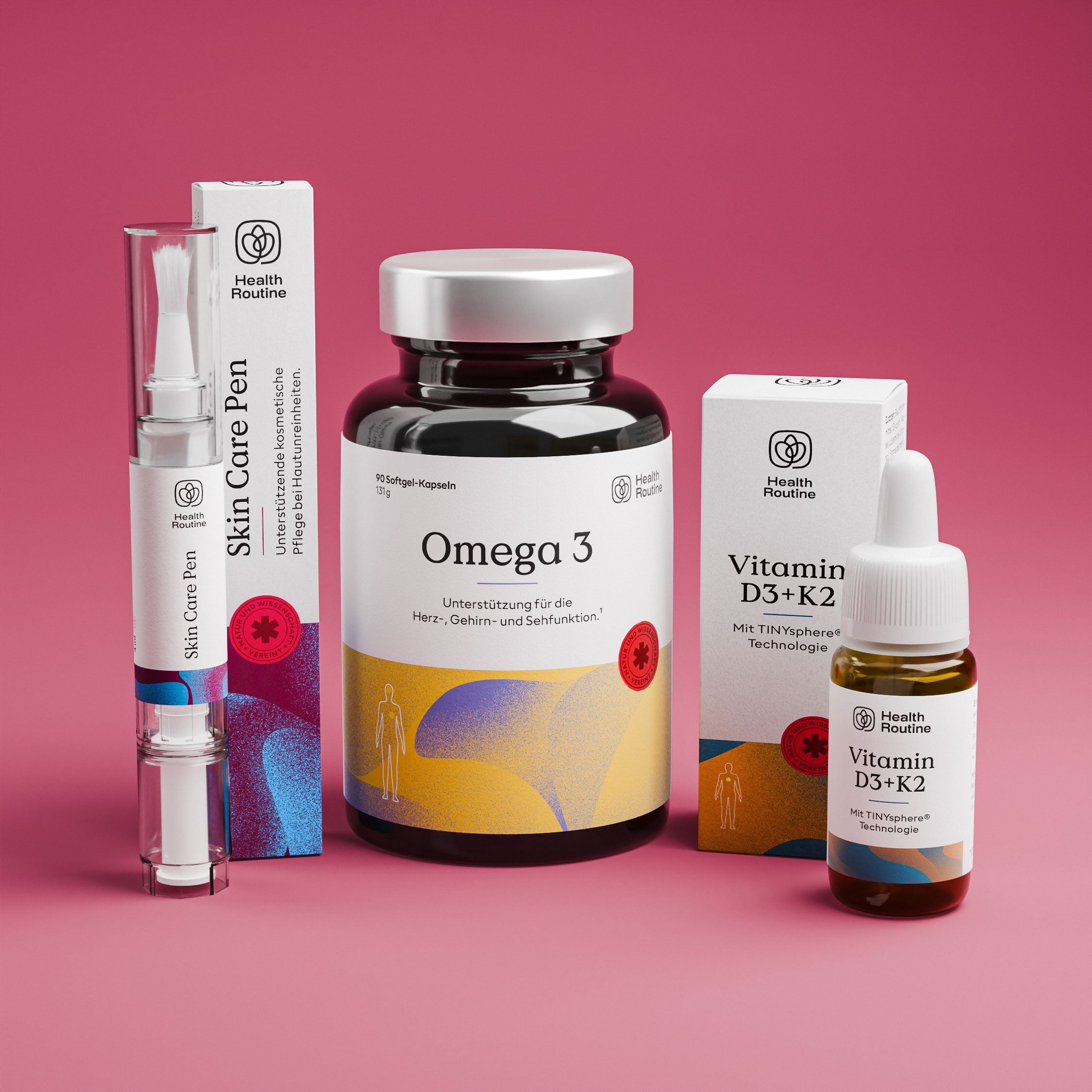The most important things at a glance:
-
Discolored nails can indicate various influences – from external stimuli to internal processes.
-
In this guide, you will learn about the different types of nail discoloration, possible triggers, and how to care for your nails.
-
You will receive helpful tips on cosmetic care and advice on when medical examination is advisable.
Overview of signs of healthy fingernails
A look at your fingernails can reveal a lot about your well-being. Healthy nails are characterized by
- a uniform, pink color
- with a clearly visible, white nail moon .
The nail bed should be firm and free of discoloration , while the cuticle should be supple and free of cracks or inflammation .
Additionally, the nail structure should be smooth and free of ridges or dents . Smooth, ridge-free fingernails generally indicate a sufficient supply of necessary nutrients.
Also, make sure your nails themselves have a natural strength without being brittle . Strong, non-brittle nails can also help prevent toenail and fingernail diseases.

Nail discoloration: The most common nail diseases and causes
Nail discoloration can sometimes be a warning sign of various nail changes and diseases . In this section, we'll explore the most common causes of discolored nails to help you identify potential problems early and treat them effectively.
A few sentences in advance: Nail changes can be caused by a variety of factors , including fungal infections , which can affect both fingernails and toenails.
Various deficiencies , which can manifest themselves in the form of grooves or white spots on the nails, are not uncommon.
More serious conditions such as heart or liver disease can also manifest themselves through nail discoloration. It's important to pay attention to such signs and, if necessary, consult a specialist to treat the underlying cause and detect and treat potential fingernail or toenail diseases early.

Whitening of the fingernails: How does leukonychia develop?
Leukonychia , a common nail disorder , is characterized by white spots or streaks on the nails . These discolorations can take various forms and have different causes.
Let’s take a look at the different forms of leukonychia :
-
Cloud- to crescent-shaped spots: This type of leukonychia presents as cloud- to crescent-shaped spots on the nails. They can be a sign of damage to the nail matrix or a reaction to certain medications. It's also possible that these spots indicate a disorder in calcium metabolism.
-
Single white spots or dots (leukonychia punctata): This form of leukonychia occurs when small, white spots or dots appear on the nails. These spots are often the result of microtrauma, or minor injuries to the nail bed. It's not uncommon for these spots to appear for no apparent reason. However, they are usually harmless.
- White streaks (Leukonychia striata) : This type of nail discoloration presents as white streaks on the nails. They can be a sign of a serious condition, such as kidney disease or a thyroid disorder, which can cause white spots on the nails.
Frosted nails: What is behind the nail discoloration?
Frosted nails , also known as Terry nails , are a special form of nail discoloration in which the nails take on a milky, cloudy appearance .
This type of nail discoloration should be taken seriously because it could be a sign of a serious underlying condition.
It's important not to panic, but the cause should still be medically investigated promptly . Let's take a look at the possible causes of this rarer nail change:
- Liver diseases
- kidney failure
- Heart failure
- Diabetes mellitus
Black fingernails: Possible reasons for the dark discoloration
Black or brown fingernails can seem alarming at first glance. They are often associated with serious underlying illnesses or injuries .
If there is no obvious injury, it is advisable to consult a specialist promptly to determine the exact cause.
Here are some possible reasons for black or brown fingernails:
- Bruises or bleeding under the nail
- Fungal infections
- Melanoma (a type of skin cancer)
- Side effects of medication
Dark deposits & pathological changes
Dark deposits in the nails can be an indicator of health problems . They can be caused by various factors , such as exposure to certain chemicals or more serious conditions such as melanoma.
It is crucial to recognize such signs early, have them assessed by a specialist and, if necessary, take timely action.
Discoloration by dark substances
Nails can become discolored through contact with dark substances . This can occur due to various influences, such as handling certain chemicals or applying intensely colored nail polish .
Fortunately, such discolorations are usually superficial and can be reduced or removed with proper care and treatment.

How the accumulation of melanin can lead to black nails
Increased melanin deposition in the nails can lead to noticeable darkening. While in some cases this may be a natural process, in other situations it can be an indication of more serious conditions, such as the aforementioned melanoma.
If you notice any noticeable changes, you should definitely seek medical advice.
How does a bruise form under the nail?
A bruise under the nail often has a bluish to black color and is usually caused by injuries or knocks .
Such discolorations can be painful and often take some time to completely fade. Possible causes of a bruise under the nail include:
- Direct trauma or injury to the nail
- Ingrown nail
- Excessive pressure on the toenails, for example from shoes that are too tight
Causes of yellow fingernails
Yellow nails can be both an aesthetic and a health concern. While some causes are harmless and easily treated , others may indicate more serious health issues.
Here are some of the most common reasons why fingernails turn yellow :
-
Nail fungus: One of the most common causes of yellow nails. The fungus can spread under the nail and cause discoloration.
-
Smoking: Nicotine can cause yellowing fingernails.
-
Age: As we age, nails may take on a yellowish hue.
-
Medications: Some medications can cause yellow nails as a side effect.
- Diseases: Certain diseases, such as lymphedema, lung disease or diabetes, can lead to yellow nails.
Recognizing and understanding half-and-half nails
Half-and-half nails , also known as Lindsay nails , exhibit a characteristic discoloration in which one part of the nail is white and the other part is red or brown . This can indicate various health problems .
Here are some of the possible causes :
-
Kidney failure: One of the most common causes of half and half nails, which should definitely be treated by a doctor.
-
Malnutrition: A deficiency of certain nutrients can also lead to this type of nail discoloration.
- Chemotherapy: Some patients report half-and-half nails during or after chemotherapy.
Why do nails turn green?
Green fingernails can be triggered by various factors. The most common cause of green discoloration on the nails is a bacterial infection , particularly Pseudomonas aeruginosa .
Here are some reasons why fingernails may turn green :
-
Bacterial infection: A green toenail or an overall green spot on a nail is often caused by the Pseudomonas bacterium.
-
Injuries: An injury can make the nail vulnerable to infection, causing the nail to turn green.
-
Poor nail care: Inadequate nail care can increase the risk of infection and thus cause your fingernails to turn green.
-
Artificial nails: If a nail has turned green under the gel, it's called a "greenie." These occur when an air space has formed between the nail bed and the gel.
In these spaces, also called lifts, bacteria and germs can easily nest and multiply. If greenies occur, the gel must be removed quickly so that the green nail can recover under the artificial nails. Re-sculpting should not be performed until the nail has healed.
This means red & purple discolorations
Red edges under the fingernails and purple discoloration of the nails can indicate a variety of health problems . Sometimes the nail moon (the lunula) is also red.
From minor injuries to serious illnesses, there are many possible causes for this purple discoloration of the nails.
Here are some of the most common reasons :
-
Injuries: A bump or bruise may cause red or purple discoloration.
-
Heart disease: Red or purple nails can be a sign of heart problems.
-
Lupus: An autoimmune disease that can cause red or purple nails.
- Raynaud's disease: A condition that restricts blood flow to the fingers and toes and can cause red or purple discoloration.
Treating nail discoloration: What really helps?
Treatment for nail discoloration can vary depending on the cause . In many cases , mild discoloration can be corrected with simple home remedies and improved nail care .
Antifungal creams or varnishes can help with fungal infections, while bacterial infections often require antibiotic treatment.
For discoloration caused by injury , patience is required, as nails need time to heal and regrow . In any case, it's advisable to consult a specialist if you're unsure how to treat nail discoloration.
If nail discoloration is present that could indicate a serious condition, medical advice should be sought to clarify the cause and treat it.
The Nail Growth Serum from Health Routine is not just another product in your nail care routine; it is your ideal helper on the way to strong and well-groomed nails.
With a carefully selected blend of natural ingredients, this serum not only promotes the growth of your fingernails and toenails, but also gives them a healthy shine and keeps them supple.
The serum combines the power of various plant oils that together can help nourish and strengthen the nails .
These oils provide deep-acting care and protect nails from external influences. Particularly noteworthy is their composition of:
➽ Citrus oil
This oil allows the nail structure to penetrate at the cellular level, allowing the serum's nourishing ingredients to penetrate deep into the nail root and develop their full power.
➽ Almond oil
A true moisturizer that not only protects against UV-induced damage but also provides essential nutrients to promote nail strength.
➽ Jojoba oil
As one of the most effective care oils, jojoba oil strengthens the nails, makes them more resilient and at the same time cares for the surrounding cuticles.
But that’s not all:
-
Coconut oil , known for its moisturizing properties, can strengthen the skin's natural protective layer and thus contribute to a healthy nail bed.
- Olive oil , rich in antioxidant and nourishing properties, promotes the elasticity and softness of the cuticles, which in turn ensures a well-groomed appearance.
This powerful blend is complemented by tocopherol (vitamin E) and biotin (vitamin B7) . Both vitamins are essential for the appearance of nails. They help support nail structure and give nails a natural shine.
For optimal results, it is also important to maintain a balanced diet rich in vitamins and minerals to support nail growth from within.
Application is incredibly simple: Apply the serum directly to the nail 2 to 3 times a day and massage it in, a task made easier by the practical brush applicator.
Before applying the serum , it is important to prepare your nails carefully:
- Remove cracked and split nails and carefully file the corners with a microfine glass file .
- After washing your hands and degreasing your nails, you can apply the serum and leave it on for about 5 to 10 minutes.
Expert tip: If you're someone who bites their nails, it could hamper nail growth and damage the nail bed. Therefore, it's advisable to break this habit to fully reap the benefits of the serum.
5 tips for everyday nail discoloration
The following tips can help to make nails shine again and reduce unwanted discoloration or, in the best case, get rid of it completely.
Baking soda: Dissolve one packet of baking soda in warm water and soak your fingernails in it for five minutes to naturally remove stains. Add a few drops of olive oil to prevent nails from drying out.
Apple cider vinegar: Mix a tablespoon of apple cider vinegar with some lukewarm water and soak your nails in it for about five minutes to remove stains quickly and without harmful chemicals. After soaking, you can lightly smooth the nail surface with a polishing file.
Lemon juice: Use the juice of half a lemon mixed with half a liter of water to naturally whiten nails. Massage the mixture into the nail surface or rub the half lemon directly over your fingernails. After the treatment, wash your hands and moisturize them with a moisturizer.
Braces cleaner: Use braces cleaning tablets, which, along with a little baking soda, can serve as a whitening hand or foot soak. Dissolve a cleaning tablet and a packet of baking soda in water and soak your nails in it. While the soak is in the water, you can lightly clean the nail surface with an old toothbrush. You can also finish with a buffing file.
Special nail polishes: Use special nail polishes with lemon extract and a slightly purple tint that can make the nail appear brighter, combat yellow nails, and eliminate discoloration in the long term.
Please note that many of these home remedies may cause irritation or allergic reactions on sensitive skin . Therefore, it's advisable to conduct a small skin test before first use and avoid overusing or overusing the products.
If discoloration or reactions persist, you should consult a dermatologist or nail specialist. It's always better to err on the side of caution and not jeopardize the health of your nails.
When should you see a doctor? If you notice that the nail discoloration doesn't go away despite your best efforts, or if it's accompanied by other symptoms such as pain or swelling, you should see a doctor.
If there are signs of infection or if the discoloration spreads, it is advisable to seek medical advice to rule out possible serious illnesses or to treat them early.
Conclusion
Our nails are not just an aesthetic accessory, they also provide information about our overall health. From simple discoloration to more serious signs of illness, they can tell us a lot about our well-being.
It's important to take care of them and care for them properly. If you have any concerns, don't hesitate to seek professional advice.
With the right tools and products combined with sound knowledge and a pinch of mindfulness, we can ensure that our nails not only look their best but also promote nail health.
Each of us deserves to feel completely comfortable from head to toe, including our fingertips.
FAQ
How can I effectively prevent nail fungus?
Nail fungus can be prevented by several measures, including good foot hygiene, wearing breathable shoes, and avoiding walking barefoot in public showers or changing rooms.
My nails are discolored due to a nail fungus – what can I do about it?
For supportive cosmetic care for nail fungus and nail discoloration, you can use the Nail Care Pen from Health Routine . This contains lemon juice, tea tree oil , and vitamin E , which can regulate the nail microflora, cosmetically relieve discoloration, and promote nail growth.
The practical pen is cruelty-free, 100% vegan and can help make your nails look radiant and well-groomed again.
Can dietary changes help prevent nail discoloration?
Yes, a balanced diet rich in vitamins and minerals can promote nail health and thus reduce the risk of nail discoloration. Certain nutrients such as biotin and zinc are considered particularly beneficial.
How often should I care for my nails to avoid discoloration?
Regular nail care, ideally weekly, can help prevent discoloration and promote the overall health of your nails. This includes gently removing any nail polish residue.
Can the Nail Growth Serum also be used on discolored toenails?
Yes, the Nail Growth Serum can be used on both fingernails and toenails to promote nail growth and improve nail quality. It is specially formulated to help both nail types.
🌿 Discover more guides from Health Routine now:
- Treating nail fungus: symptoms, remedies and tips
- Brittle fingernails: causes, treatment & tips
- Dents in the fingernail » From the cause to the solution
Your medical advice
Our products are not intended to diagnose, treat, cure, or prevent any disease. The information provided in this article is for informational purposes only and is not intended as a substitute for advice from your physician or other healthcare professional.
Furthermore, our products are not a substitute for medications or other treatments prescribed by your doctor or healthcare provider. Regardless of the due care taken, no liability or warranty is assumed for the
- Accuracy,
- topicality,
- completeness
- and availability of the information provided.
No legal claims can be made for any damages potentially resulting from the use and application of this information. Liability claims of any kind are excluded.
